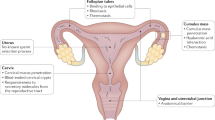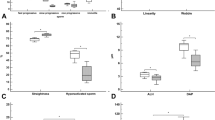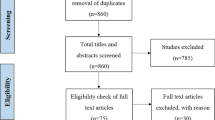Abstract
The preferred sex of livestock differs among breeders; for example, dairy farmers prefer female calves for the production of milk, whereas cattle meat producers often prefer males. Sexing of laboratory animals is also beneficial in some research fields, including reproductive biology and metabolic studies. Most sexing methods separate X sperm and Y sperm with a cell sorter. Here, we describe a system in which treatment with the TLR7/8 ligand (R848) separates X sperm from Y sperm. Because this protocol does not require any special equipment or professional skills, it can be easily applied in laboratories where in vitro fertilization (IVF) is performed. The sperm are treated with 0.03 µM R848 in 1 mL of modified human tubal fluid (mHTF) medium (mouse sperm) or 3 mL of mHTF medium (bull sperm) for 60 min, and then the upper layer (400 µL in mouse sperm or 1 mL in bull sperm) and the precipitate are separately collected. After each sample is washed by centrifugation, the sperm are suspended in ligand-free IVF medium and can then be used for IVF. More than 90% of the embryos made with upper-layer sperm are XY in both mice and cattle, and >80% of the embryos made with precipitated sperm are XX in both species. Separation of X sperm and Y sperm for IVF can be completed within 2 h.
This is a preview of subscription content, access via your institution
Access options
Access Nature and 54 other Nature Portfolio journals
Get Nature+, our best-value online-access subscription
$29.99 / 30 days
cancel any time
Subscribe to this journal
Receive 12 print issues and online access
$259.00 per year
only $21.58 per issue
Buy this article
- Purchase on Springer Link
- Instant access to full article PDF
Prices may be subject to local taxes which are calculated during checkout











Similar content being viewed by others
Data availability
All raw data except those from the flow cytometry are available at Figshare (https://doi.org/10.6084/m9.figshare.12152712), and in the Supplementary Data. Other data are available on request from the authors.
References
Seidel, G. E. Sexing mammalian sperm – intertwining of commerce, technology, and biology. Anim. Reprod. Sci. 79, 145–156 (2003).
Seidel, G. E. Overview of sexing sperm. Theriogenology 68, 443–446 (2007).
Naniwa, Y., Sakamoto, Y., Toda, S. & Uchiyama, K. Bovine sperm sex-selection technology in Japan. Reprod. Med. Biol. 18, 17–26 (2019).
Ran, F. A. et al. Genome engineering using the CRISPR-Cas9 system. Nat. Protoc. 8, 2281–2308 (2013).
Tsien, J. Z. et al. Subregion- and cell type-restricted gene knockout in mouse brain. Cell 87, 1317–1326 (1996).
Handyside, A. H. et al. Biopsy of human preimplantation embryos and sexing by DNA amplification. Lancet 333, 347–349 (1989).
Bradbury, M. W., Isola, L. M. & Gordon, J. W. Enzymatic amplification of a Y chromosome repeat in a single blastomere allows identification of the sex preimplantation mouse embryos. Proc. Natl Acad. Sci. USA 87, 4053–4057 (1990).
Peura, T., Hyttinen, J. M., Turunen, M. & Jänne, J. A reliable sex determination assay for bovine preimplantation embryos using the polymerase chain reaction. Theriogenology 35, 547–555 (1991).
Rao, K. B. & Totey, S. M. Sex determination in sheep and goats using bovine Y-chromosome specific primers via polymerase chain reaction: potential for embryo sexing. Indian J. Exp. Biol. 30, 775–777 (1992).
Pomp, D., Good, B. A., Geisert, R. D., Corbin, C. J. & Conley, A. J. Sex identification in mammals with polymerase chain reaction and its use to examine sex effects on diameter of day-10 or -11 pig embryos. J. Anim. Sci. 73, 1408–1415 (1995).
Johnson, L. A. & Clarke, R. N. Flow sorting of X and Y chromosome-bearing mammalian sperm: activation and pronuclear development of sorted bull, boar, and ram sperm microinjected into hamster oocytes. Gamete Res 21, 335–343 (1988).
Garner, D. L., Evans, K. M. & Seidel, G. E. Sex-sorting sperm using flow cytometry/cell sorting. Spermatogenesis 279–295 (Humana Press, 2013).
Garner, D. L. et al. Quantification of the X- and Y-chromosome-bearing spermatozoa of domestic animals by flow cytometry. Biol. Reprod. 28, 312–321 (1983).
Lindsey, A. C. et al. Hysteroscopic insemination of mares with low numbers of nonsorted or flow sorted spermatozoa. Equine Vet. J. 34, 128–132 (2002).
Parrilla, I., Vazquez, J., Roca, J. & Martinez, E. Flow cytometry identification of X- and Y-chromosome-bearing goat spermatozoa. Reprod. Domest. Anim. 39, 58–60 (2004).
Oi, M., Yamada, K., Hayakawa, H. & Suzuki, H. Sexing of dog sperm by fluorescence in situ hybridization. J. Reprod. Dev. 59, 92 (2012).
Pope, C. E., Crichton, E. G., Gómez, M. C., Dumas, C. & Dresser, B. L. Birth of domestic cat kittens of predetermined sex after transfer of embryos produced by in vitro fertilization of oocytes with flow-sorted sperm. Theriogenology 71, 864–871 (2009).
Gao, Q. H. et al. Flow cytometric sexing of X- and Y-chromosome-bearing sperm in Sika deer (Cervus nippon). Small Rumin. Res 81, 100–104 (2009).
Gao, Q. H. et al. Successful low dose insemination of flow cytometrically sorted Sika (Cervus nippon) sperm in Wapiti (Cervus elaphus). Anim. Reprod. Sci. 118, 89–93 (2010).
O’Brien, J. K. & Robeck, T. R. Development of sperm sexing and associated assisted reproductive technology for sex preselection of captive bottlenose dolphins (Tursiops truncatus). Reprod. Fertil. Dev. 18, 319 (2006).
Lu, Y. Q. et al. Identification of X- and Y-chromosome bearing buffalo (Bubalus bubalis) sperm. Anim. Reprod. Sci. 95, 158–164 (2006).
Rens, W., Welch, G. R. & Johnson, L. A. Improved flow cytometric sorting of X- and Y-chromosome bearing sperm: substantial increase in yield of sexed semen. Mol. Reprod. Dev. 52, 50–56 (1999).
Johnson, L. A. & Welch, G. R. Sex preselection: high-speed flow cytometric sorting of X and Y sperm for maximum efficiency. Theriogenology 52, 1323–1341 (1999).
Carvalho, J. O., Sartori, R., Machado, G. M., Mourão, G. B. & Dode, M. A. N. Quality assessment of bovine cryopreserved sperm after sexing by flow cytometry and their use in in vitro embryo production. Theriogenology 74, 1521–1530 (2010).
Buchanan, B. R. et al. Insemination of mares with low numbers of either unsexed or sexed spermatozoa. Theriogenology 53, 1333–1344 (2000).
Johnson, L. A., Rath, D., Vazquez, J. M., Maxwell, W. M. C. & Dobrinsky, J. R. Preselection of sex of offspring in swine for production: current status of the process and its application. Theriogenology 63, 615–624 (2005).
Johnson, L. A., Flook, J. P. & Hawk, H. W. Sex preselection in rabbits: live births from X and Y sperm separated by DNA and cell sorting. Biol. Reprod. 41, 199–203 (1989).
Foote, R. H. The history of artificial insemination. J. Anim. Sci. 80, 1–10 (2010).
Knox, R. V. Artificial insemination in pigs today. Theriogenology 85, 83–93 (2016).
Woods, J. et al. Effect of intrauterine treatment with prostaglandin E2 prior to insemination of mares in the uterine horn or body. Theriogenology 53, 1827–1836 (2000).
Morris, L. H. A., Tiplady, C. & Allen, W. R. Pregnancy rates in mares after a single fixed time hysteroscopic insemination of low numbers of frozen-thawed spermatozoa onto the uterotubal junction. Equine Vet. J. 35, 197–201 (2003).
Zucchi, I. et al. Transcription map of Xq27: candidates for several X-linked diseases. Genomics 57, 209–218 (1999).
Deveraux, Q. L., Takahashi, R., Salvesen, G. S. & Reed, J. C. X-linked IAP is a direct inhibitor of cell-death proteases. Nature 388, 300–304 (1997).
Mason, P. J. et al. Human hexose-6-phosphate dehydrogenase (glucose 1-dehydrogenase) encoded at 1p36: coding sequence and expression. Blood Cells Mol. Dis. 25, 30–37 (1999).
Foster, J. W. et al. Evolution of sex determination and the Y chromosome: SRY-related sequences in marsupials. Nature 359, 531–533 (1992).
Braun, R. E., Behringer, R. R., Peschon, J. J., Brinster, R. L. & Palmiter, R. D. Genetically haploid spermatids are phenotypically diploid. Nature 337, 373–376 (1989).
Jasin, M. & Zalamea, P. Analysis of Escherichia coli β-galactosidase expression in transgenic mice by flow cytometry of sperm. Proc. Natl Acad. Sci. USA 89, 10681–10685 (1992).
Greenbaum, M. P. et al. TEX14 is essential for intercellular bridges and fertility in male mice. Proc. Natl Acad. Sci. USA 103, 4982–4987 (2006).
Greenbaum, M. P., Ma, L. & Matzuk, M. M. Conversion of midbodies into germ cell intercellular bridges. Dev. Biol. 305, 389–396 (2007).
Iwamori, T. et al. TEX14 interacts with CEP55 to block cell abscission. Mol. Cell. Biol. 30, 2280–2292 (2010).
Dym, M. & Fawcett, D. W. Further observations on the numbers of spermatogonia, spermatocytes, and spermatids connected by intercellular bridges in the mammalian testis. Biol. Reprod. 4, 195–215 (1971).
Namekawa, S. H. et al. Postmeiotic sex chromatin in the male germline of mice. Curr. Biol. 16, 660–667 (2006).
Reynard, L. N. et al. Expression analysis of the mouse multi-copy X-linked gene Xlr-related, meiosis-regulated (Xmr), reveals that Xmr encodes a spermatid-expressed cytoplasmic protein, SLX/XMR1. Biol. Reprod. 77, 329–335 (2007).
Cocquet, J. et al. The multicopy gene Sly represses the sex chromosomes in the male mouse germline after meiosis. PLoS Biol. 7, e1000244 (2009).
Kruger, A. N. et al. A neofunctionalized X-linked ampliconic gene family is essential for male fertility and equal sex ratio in mice. Curr. Biol. 29, 3699–3706.e5 (2019).
Rathje, C. C. et al. Differential sperm motility mediates the sex ratio drive shaping mouse sex chromosome evolution. Curr. Biol. 29, 3692–3698.e4 (2019).
Sarkar, S., Jolly, D. J., Friedmann, T. & Jones, O. W. Swimming behavior of X and Y human sperm. Differentiation 27, 120–125 (1984).
Shettles, L. B. Factors influencing sex ratios. Int. J. Gynecol. Obstet. 8, 643–647 (1970).
Oyeyipo, I. P., van der Linde, M. & du Plessis, S. S. Environmental exposure of sperm sex-chromosomes: a gender selection technique. Toxicol. Res 33, 315–323 (2017).
Umehara, T., Tsujita, N. & Shimada, M. Activation of Toll-like receptor 7/8 encoded by the X chromosome alters sperm motility and provides a novel simple technology for sexing sperm. PLOS Biol. 17, e3000398 (2019).
Gohil, V. M. et al. Nutrient-sensitized screening for drugs that shift energy metabolism from mitochondrial respiration to glycolysis. Nat. Biotechnol. 28, 249–255 (2010).
Potter, M., Newport, E. & Morten, K. J. The Warburg effect: 80 years on. Biochem. Soc. Trans. 44, 1499–1505 (2016).
Zhu, Z. et al. Gene expression and protein synthesis in mitochondria enhance the duration of high-speed linear motility in boar sperm. Front. Physiol. 10, 252 (2019).
Winet, H., Bernstein, G. S. & Head, J. Observations on the response of human spermatozoa to gravity, boundaries and fluid shear. J. Reprod. Fertil. 70, 511–523 (1984).
Shimada, M., Hernandez-Gonzalez, I., Gonzalez-Robanya, I. & Richards, J. S. Induced expression of pattern recognition receptors in cumulus oocyte complexes: novel evidence for innate immune-like functions during ovulation. Mol. Endocrinol. 20, 3228–3239 (2006).
Shimada, M. et al. Hyaluronan fragments generated by sperm-secreted hyaluronidase stimulate cytokine/chemokine production via the TLR2 and TLR4 pathway in cumulus cells of ovulated COCs, which may enhance fertilization. Development 135, 2001–2011 (2008).
Umehara, T., Kawai, T., Goto, M., Richards, J. S. & Shimada, M. Creatine enhances the duration of sperm capacitation: a novel factor for improving in vitro fertilization with small numbers of sperm. Hum. Reprod. 33, 1117–1129 (2018).
Burden, S. Acetylcholine receptors at the neuromuscular junction: developmental change in receptor turnover. Dev. Biol. 61, 79–85 (1977).
Olds-Clarke, P. Motility characteristics of sperm from the uterus and oviducts of female mice after mating to congenic males differing in sperm transport and fertility. Biol. Reprod. 34, 453–467 (1986).
Suarez, S. S. Sperm transport and motility in the mouse oviduct: observations in situ. Biol. Reprod. 36, 203–210 (1987).
Okazaki, T., Yoshida, S., Teshima, H. & Shimada, M. The addition of calcium ion chelator, EGTA to thawing solution improves fertilizing ability in frozen–thawed boar sperm. Anim. Sci. J. 82, 412–419 (2011).
Parati, K., Bongioni, G., Aleandri, R. & Galli, A. Sex ratio determination in bovine semen: a new approach by quantitative real time PCR. Theriogenology 66, 2202–2209 (2006).
Acknowledgements
This work was supported in part by the Livestock Promotional Funds of the Japan Racing Association (JRA) and by the Hiroshima Cryopreservation Service Co. (M.S.).
Author information
Authors and Affiliations
Contributions
T.U., N.T., Z.Z. and M.S. developed this protocol. Bovine IVF was performed by M.I. T.U. made the figures and wrote the manuscript. M.S. supervised all aspects of this study and wrote the manuscript
Corresponding author
Ethics declarations
Competing interests
Hiroshima University and Oita Prefecture have filed a provisional patent application on the mammalian sperm sexing technique using TLR7/8 ligands; the inventors on this application are T.U., M.I. and M.S.
Additional information
Peer review information Nature Protocols thanks Manuel Hidalgo and the other, anonymous, reviewer(s) for their contribution to the peer review of this work.
Publisher’s note Springer Nature remains neutral with regard to jurisdictional claims in published maps and institutional affiliations.
Related links
Key reference using this protocol
Umehara, T., Tsujita, N. & Shimada, M. et al. PLoS Biol. 17, e3000398 (2019): https://doi.org/10.1371/journal.pbio.3000398
Supplementary information
Supplementary Information
Supplementary Method, Supplementary Table 1 and Supplementary Fig. 1.
Supplementary Data
All individual numerical values that underlie the summary data that are shown in the figures.
Rights and permissions
About this article
Cite this article
Umehara, T., Tsujita, N., Zhu, Z. et al. A simple sperm-sexing method that activates TLR7/8 on X sperm for the efficient production of sexed mouse or cattle embryos. Nat Protoc 15, 2645–2667 (2020). https://doi.org/10.1038/s41596-020-0348-y
Received:
Accepted:
Published:
Issue Date:
DOI: https://doi.org/10.1038/s41596-020-0348-y
This article is cited by
Comments
By submitting a comment you agree to abide by our Terms and Community Guidelines. If you find something abusive or that does not comply with our terms or guidelines please flag it as inappropriate.



